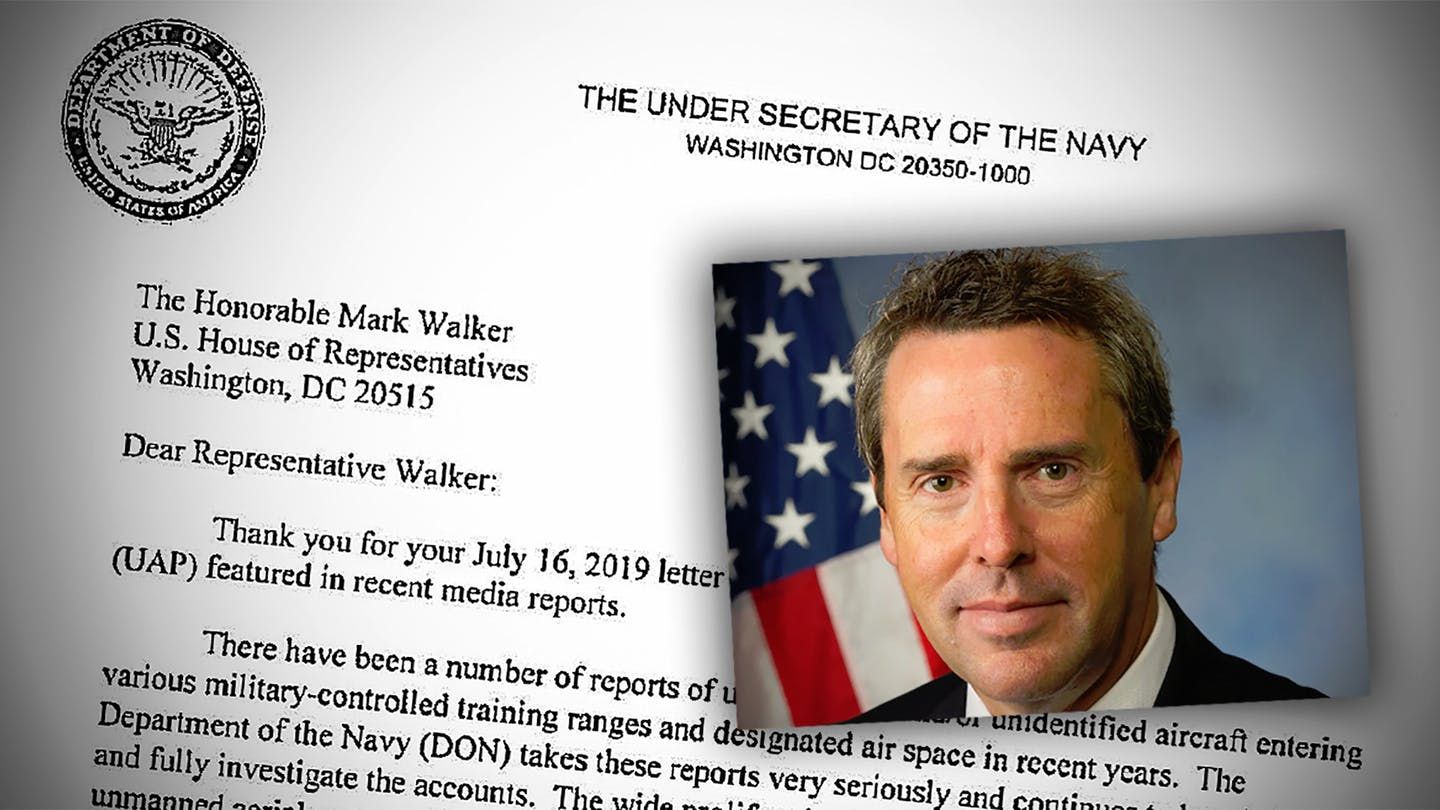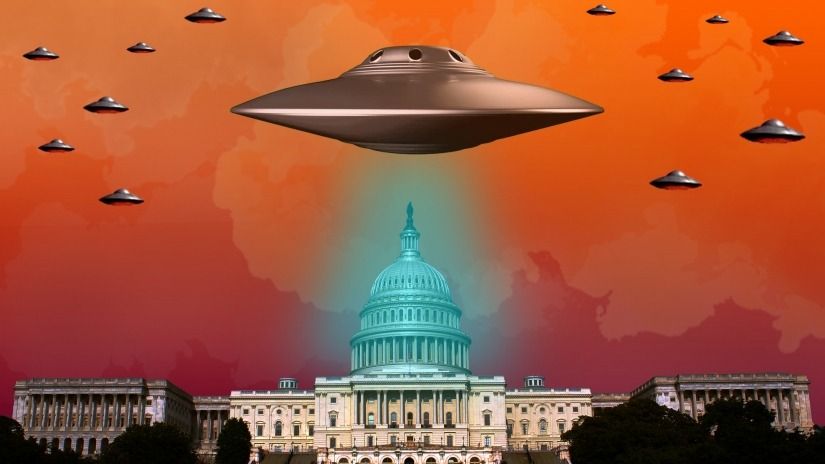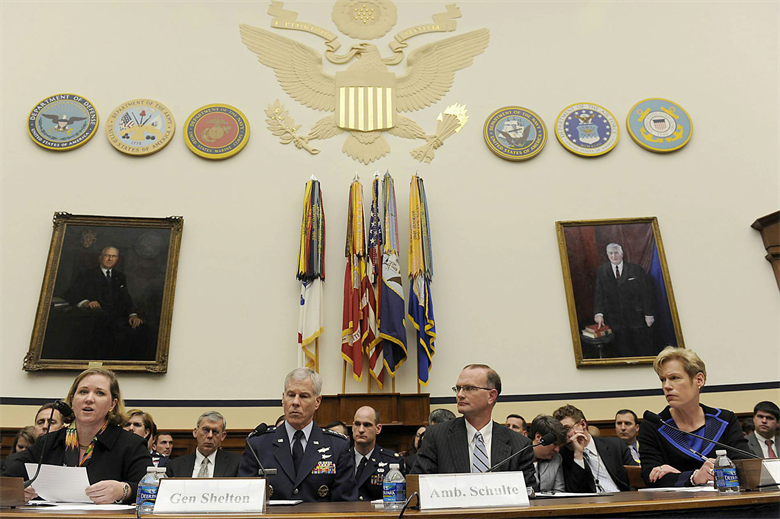The Letter the Navy Sent a Congressman Who Was Demanding Answers About UFOs
Article by Joseph Trevithick March 6, 2020 (thedrive.com)
• Last year, Congressman Mark Walker, (R-NC) and a member of the House Committee on Homeland Security (pictured above), wrote a letter to the US Navy demanding answers to the military’s UFO sightings. On July 31, 2019, then-Under Secretary of the Navy Thomas Modly wrote a responsive letter to the Congressman, who deemed it “frustratingly insufficient”. Politico reported on the response in September 2019, but didn’t publish the letter itself. On March 5, 2020, in response to a Freedom of Information Act request, The War Zone obtained a complete, unredacted copy of the responsive letter.
• In his July 31 responsive letter, Moldy wrote, “There have been a number of reports of unauthorized and/or unidentified aircraft entering various military-controlled training ranges and designated air space in recent years. …The Department of the Navy (DON) takes these reports very seriously and continues to log sightings and fully investigate the accounts.”
• Congressman Walker’s original letter clearly asked the Navy for information about the highly publicized incidents that fighter pilots had reported, which involved flying craft capable of extreme levels of speed and maneuverability (ie: the “Tic Tac” UFO). But Modly’s letter makes no mention of the high-profile UFO/UAP incidents involving US Navy pilots and personnel dating back to at least 2004. It also does not mention the DoD/DIA’s Advanced Aerospace Threat and Identification Program or its predecessor program.
• Instead, the Navy’s response focused on drones buzzing military bases. “The wide proliferation and availability of inexpensive unmanned aerial systems (UAS) has increasingly made airspace de-confliction an issue for our aviators.” Moldy’s letter then addresses what the Navy is doing about these drones. “Naval aircrews have been provided reporting guidance to determine the frequency and location of UAS operating in training areas. …The Department of the Navy continues to dedicate resources to the tracking and investigation of reports that could affect the safety of our aircrews.”
• Modly’s letter ends by saying that the Navy will continue to work with the House of Representatives via the House Armed Services Committee, of which Walker is not a member. It does not address the release of data or physical evidence relating to reported UAP sightings, which the letter specifically sought.
• Walker had sent his letter because the reported UAP incidents represented a threat to Homeland Security, including commercial and civilian aircraft as well as military ones flying in US Airspace. With these mysterious UAPs roaming the skies, Navy pilots had expressed concern for their safety. The responsive letter from the Under Secretary did little to alleviate those concerns.
• In a statement, Walker said: “While I am encouraged the Under Secretary of the Navy confirmed that UAP encounters are fully investigated, there is frustration with the lack of answers to specific questions about the threat that superior aircraft flying in United States airspace may pose. …If the Navy believes that China or Russia possesses advanced aerospace technologies that represent a national security vulnerability, the American people have the right to know what their government is doing about it.”
• It’s unclear if Walker, or any other members of Congress, have followed up or otherwise succeeded in obtaining additional information on this issue. Some Senators and the President have received classified briefings on the UAP sightings. But in September 2019, the Navy stated that it had not received any further requests from legislators on this topic.
• Whatever the case, the public safety and national security concerns surrounding UAP sightings are still very much in the public consciousnesses.
Last year, Congressman Mark Walker, a Republican from North Carolina and a member of the House Committee on Homeland Security, wrote a letter to the U.S. Navy demanding answers regarding sightings of what are commonly referred to as unidentified flying objects, or UFOs. Now, The War Zone has obtained a complete copy of the service’s response to these questions about how it is recording and assessing incidents involving what it calls unidentified aerial phenomena, or UAP, which the lawmaker has already said he felt was frustratingly insufficient.
On Mar. 5, 2020, the Navy released an unredacted copy of the letter, which then-Undersecretary of the Navy Thomas Modly wrote on July 31, 2019, in response to a Freedom of Information Act request. Politico was first to report on this letter, after obtaining a copy, in September 2019, but did not publish or otherwise reproduce it in full.
Walker had sent his initial letter, addressed to then-Secretary of the Navy Richard Spencer, on July 16, 2019, and had made a copy publicly available on July 29, which the War Zone reported on at the time. It is also worth noting that Modly has been Acting Secretary of the Navy since Spencer resigned in November 2019.
“There have been a number of reports of unauthorized and/or unidentified aircraft entering various military-controlled training ranges and designated air space in recent years,” Modly wrote in this July 31 response. “The Department of the Navy (DON) takes these reports very seriously and continues to log sightings and fully investigate the accounts.”
Modly’s letter makes no mention of a number of high profile UAP incidents involving Navy F/A-18C/D Hornet and F/A-18E/F Super Hornet fighter jets, dating back to at least 2004. You can read more about these particular events in detail in these past War Zone stories.
It also does not discuss any Navy connection to the Advanced Aerospace Threat and Identification Program (AATIP), or its predecessor, the Advanced Aerospace Weapon System Applications (AAWSA) program, which existed for various periods of time within the Defense Intelligence Agency (DIA) and the Office of the Secretary of Defense. You can find out more about those programs in these previous War Zone pieces.
FAIR USE NOTICE: This page contains copyrighted material the use of which has not been specifically authorized by the copyright owner. ExoNews.org distributes this material for the purpose of news reporting, educational research, comment and criticism, constituting Fair Use under 17 U.S.C § 107. Please contact the Editor at ExoNews with any copyright issue.



